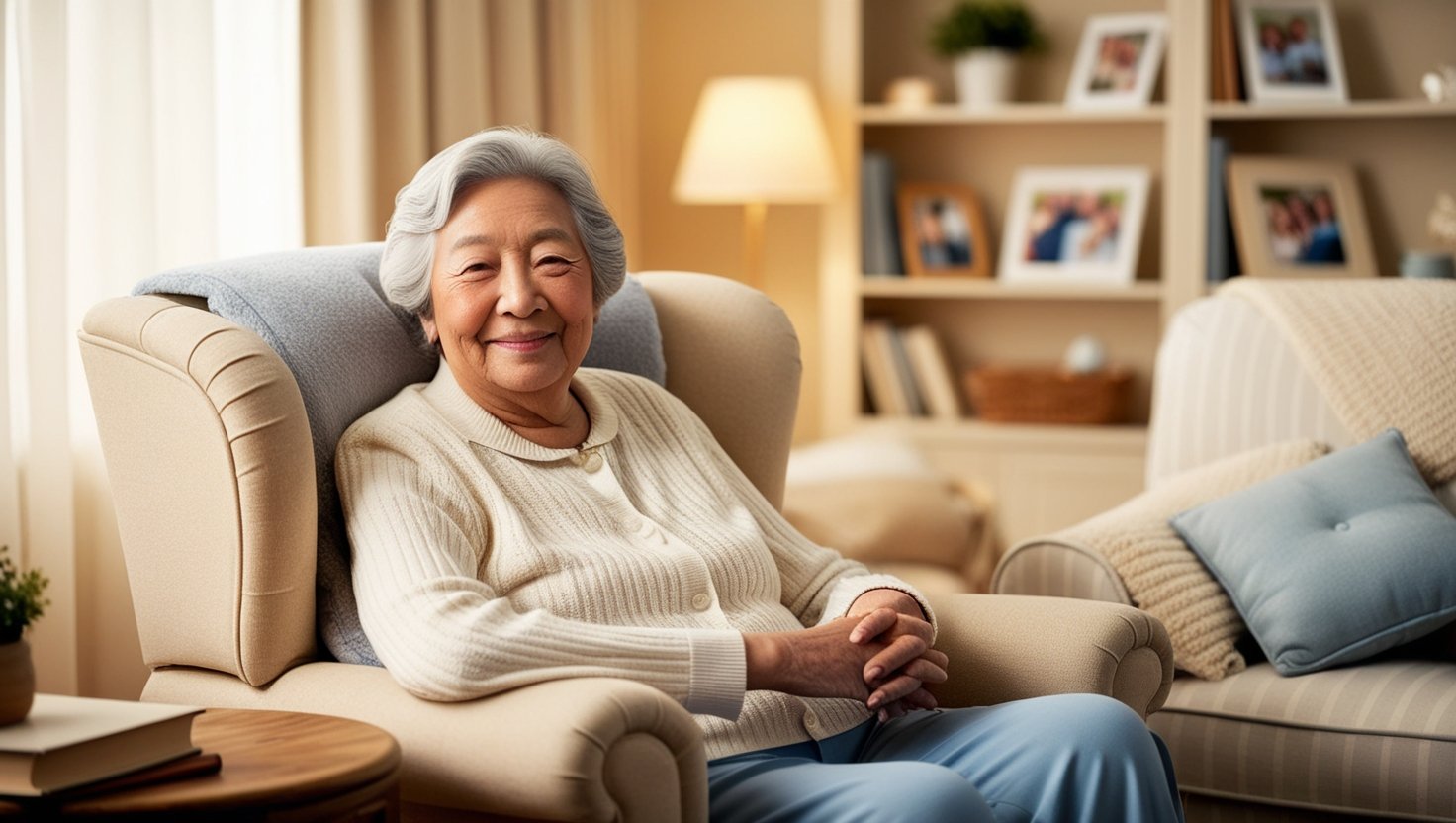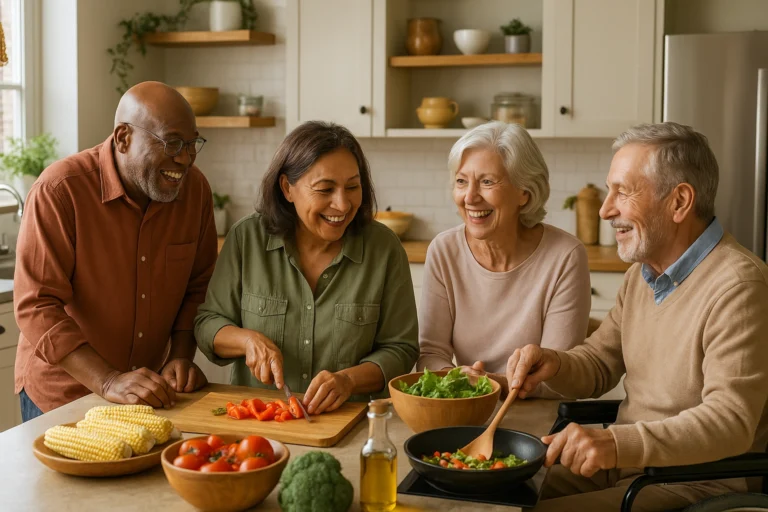In a world increasingly designed for speed and efficiency, senior safety tends to get overlooked. Yet, for caregivers and family members of older adults, prioritizing safety is nothing short of crucial. Each day presents unique challenges that can jeopardize the health and well-being of seniors. From simple household hazards to the complexities of medication management, it’s vital to confront potential risks head-on. Ensuring their safety not only protects seniors but also provides peace of mind for those who care for them.
This article introduces a comprehensive checklist approach that empowers caregivers and family members alike. It serves as a roadmap guiding proactive care strategies tailored specifically to the needs of seniors. By breaking down key areas like home modifications, emergency preparedness, health and social engagement, this checklist becomes an accessible tool to enhance senior safety in everyday life. Delve into practical solutions designed to transform environments into safe havens for aging loved ones while promoting their independence. With each section building upon the last, you will find exactly what you need to secure safety and foster genuine support for those who have spent lifetimes caring for others. Your journey towards creating a safer space for your loved one begins here; let’s take these vital steps together.
Home Modifications for Safety

Ensuring the safety of seniors in their homes begins with thoughtful home modifications. Accessibility features such as ramps and grab bars can make a world of difference. For instance, installing grab bars in bathrooms provides essential support for getting in and out of the shower or using the toilet. Similarly, entryways should incorporate ramps instead of steps when possible. These adaptations allow seniors with mobility issues to navigate their spaces independently, ultimately enhancing their confidence and quality of life.
Reducing fall risks is another critical aspect of home safety. Non-slip surfaces in high-traffic areas, particularly on stairs and bathroom floors, can significantly minimize accidents. Consider using rubber mats or adhesive strips for added grip on slippery tiles. Moreover, keep commonly used items within easy reach to avoid reaching or bending too far—small changes such as rearranging kitchen cabinets can prevent dangerous falls while cooking or fetching essentials.
Adequate lighting plays a pivotal role in preventing accidents at home. Well-lit hallways and rooms allow seniors to see obstacles that might cause tripping or stumbling. As natural light often diminishes with age, consider adding motion-sensor lights along frequently traveled paths, ensuring illumination without requiring seniors to fumble for switches. Additionally, use brighter bulbs in lamps and overhead lights to enhance visibility throughout the home, allowing seniors to move freely without fear of unexpected hazards lurking in shadows.
Incorporating these modifications not only improves safety but also fosters independence among seniors living at home. By proactively addressing potential dangers through strategic design choices, family members and caregivers contribute significantly to an environment where older adults can thrive.
Emergency Preparedness Plans
Creating an effective emergency preparedness plan is crucial for ensuring seniors can respond swiftly and safely in crisis situations. Start by assembling a clear, easy-to-read emergency contact list that includes family members, close friends, neighbors, health care providers, and local emergency services. This document should be easily accessible; consider placing copies near phones, in wallet cards, or on a bulletin board. Ensure that your loved one understands who to contact in various emergencies. This knowledge can boost their confidence when they face unforeseen circumstances.
In addition to having emergency contacts ready, it’s essential to develop an evacuation plan tailored specifically to the mobility needs of the senior individual. For instance, if a senior uses a wheelchair or walker, identify routes that are wide enough for easy navigation and free from obstacles. Regularly practice these routes during calm moments to build familiarity and confidence. Identify exits within the home and assemble necessary items such as medications, identification documents, and basic first aid supplies into grab-and-go bags placed strategically near exit points.
Regular drills help reinforce the emergency response framework you’ve established together. These practice sessions simulate various scenarios like fire alarms or natural disasters so that everyone knows what steps to take when alarm bells ring—literally or metaphorically. Use each drill as an opportunity for discussion: ask seniors how they feel about their preparations and reassess any portions of the plan that may require adjustments or updates based on their feedback. The more prepared your loved ones feel, the more empowered they become during actual emergencies.
Ultimately, effective planning not only safeguards safety but also promotes peace of mind among caregivers and seniors alike. By honing these skills through repeated practice and open dialogue about emergencies, you foster resilience while reinforcing trust between family members in tough situations. With every conversation you have about preparedness plans and every drill conducted at home, you significantly enhance both safety measures and emotional readiness for whatever challenges may arise.
Health Management and Medication Safety
Managing health and medications is crucial for seniors. A well-organized system can prevent errors and promote better health outcomes. Using pillboxes or detailed medication schedules simplifies this process. For example, a weekly pill organizer allows caregivers to sort out daily doses. This method helps in preventing missed or double doses, which may lead to serious health issues. Establishing routines around medication times not only boosts adherence but also offers peace of mind to both the senior and their loved ones.
Monitoring health conditions requires vigilance. Seniors often experience varying symptoms linked to chronic illnesses such as diabetes or hypertension. Recognizing changes early can be essential; caregivers should watch for unusual fatigue, increased confusion, or shifts in appetite, among other signs. Keeping a symptom diary could prove invaluable, helping track variations that might require a healthcare consultation. Regular check-ins with healthcare professionals maintain continuity of care and ensure that appropriate adjustments are made when managing these conditions.
Communication with healthcare providers hinges on clarity and persistence. Encourage seniors to voice their concerns during appointments actively—this ensures they receive comprehensive care tailored to their needs. Caregivers play an essential role by preparing questions ahead of time and summarizing key points discussed during visits. Taking notes can help capture critical information about medication changes or treatment plans, reducing the chance of miscommunication later on.
Moreover, using technology can enhance communication channels with healthcare providers through patient portals or telehealth services. Enabling seniors to embrace these tools encourages proactive engagement in their own healthcare management. Remember that safety begins with informed choices based on clear understanding; prioritizing health management ultimately empowers seniors while providing much-needed security for their caregiving circles.
Social Engagement Strategies
Social interaction plays a vital role in the health and well-being of seniors. Engaging with others helps combat feelings of loneliness and isolation, which can significantly impact mental health. Research shows that regular socialization can lead to improved cognitive function and emotional resilience. Encouraging seniors to participate in community events, clubs, or classes can create new friendships and rekindle old passions, boosting their overall quality of life. For instance, a local art class not only allows for creativity but also fosters connections among participants.
Participation in structured local activities is essential for maintaining a sense of purpose and belonging. Explore options such as senior centers, where various programs cater to diverse interests—from fitness classes to book clubs. Many communities offer organized outings like gardening days or cultural festivals that provide both enjoyment and opportunities for connection. Family members should actively encourage these engagements by helping to identify suitable options within reach. Even simple activities like attending local farmer’s markets or joining walking groups create chances for seniors to interact outside their homes.
In today’s digital age, technology serves as a tool to connect seniors to family and friends who are not physically nearby. Platforms like video-calling apps enable regular catch-ups with grandchildren living far away or help maintain lifelong friendships through virtual gatherings. Additionally, social media offers ways to share moments from daily life, like a great meal or an event attended, which keeps families involved even from afar. Training seniors to use these tools confidently enhances communication and reduces the sense of distance many feel in our increasingly mobile society.
By tapping into community activities and technological resources, caregivers play a crucial role in supporting senior engagement. Implementing strategies to promote social interactions reinforces the importance of relationships in overall well-being. As seniors become more active participants in their communities, they cultivate connections that uplift them and create lasting memories—all contributing positively to their safety narrative.
Nutrition and Meal Preparation Tips
A balanced diet is crucial for seniors to maintain their health and well-being. Proper nutrition helps prevent chronic diseases, supports immune function, and enhances overall quality of life. Older adults often have unique dietary needs due to age-related changes in metabolism, medication side effects, or existing health conditions. For instance, seniors with diabetes may require careful management of carbohydrate intake, while those with heart issues might need low-sodium foods. Ensuring that meals are both nutrient-dense and tailored to individual requirements is vital.
Safe meal preparation becomes equally important as dietary restrictions shape choices. A clean kitchen prevents foodborne illnesses. Encourage the use of separate cutting boards for meats and vegetables to avoid cross-contamination. Also, consider batch cooking and freezing meals to simplify nutritious dining options during busy days or times when energy levels are low. Incorporating a variety of colors in fruits and vegetables not only makes meals visually appealing but also ensures a broader spectrum of nutrients essential for optimal health.
Hydration often goes overlooked but plays a vital role in senior nutrition. Adequate fluid intake helps preserve cognitive function and prevents dehydration-related complications like urinary tract infections or kidney stones. Encouraging hydration can be simple: provide easily accessible water bottles throughout the home, and offer hydrating snacks like cucumbers or watermelon during meal prep. Additionally, introducing herbal teas or broths adds flavor without the excessive sugar or caffeine found in some juices, making drinking more enjoyable.
Overall, integrating these nutrition strategies into daily routines promotes healthier lifestyle choices for seniors and supports lasting wellness. Prioritize education about food choices, make meal prep enjoyable by involving seniors in the process, and remain attentive to any changes in their appetite or preferences. These steps help caregivers ensure aging loved ones lead brighter lives through good nutrition.
Utilizing Assistive Technologies
In today’s fast-paced world, assistive technologies enhance the safety and well-being of seniors living independently. Gadgets like medical alert systems and wearable devices serve as lifelines, providing immediate access to support during emergencies. Devices equipped with fall detection can automatically notify caregivers or emergency services if a senior takes a tumble. Similarly, smart home systems allow for hands-free control of lights and thermostats, improving accessibility within the home environment. These tools not only offer peace of mind but also empower seniors by ensuring they’re connected and secure.
However, introducing new technology can sometimes feel overwhelming for seniors. It’s essential to approach training with patience and clarity. Simple instructions, demonstrations, and practice sessions help build confidence in using technology effectively. For instance, engaging a family member or caregiver to conduct one-on-one tutorials can make the learning process less intimidating.
Consider developing a quick-reference guide that highlights critical functions—this can serve as a valuable resource when they need assistance or reassurance while navigating their devices.
While these tech innovations are beneficial in promoting safety, it is important to strike a balance between technology use and traditional support methods. Seniors benefit from human connection as much as they do from gadgets that provide automated alerts or reminders. Combining regular check-ins from family members or caregiving professionals with assistive technology ensures comprehensive support tailored to individual needs. This holistic approach promotes independence while fostering meaningful relationships that bolster emotional health.
Integrating these technologies in daily routines with adequate training, and maintain personal connections, this creates an environment where seniors feel safe and empowered. Considering both innovative tools and traditional care strategies creates lasting impacts on their overall well-being.
Monitoring Mental Health
Monitoring the mental health of seniors is a crucial aspect of comprehensive safety. As individuals age, they may face challenges that can trigger feelings of depression or anxiety. Recognizing these signs early on can make a significant difference in quality of life. Common indicators include persistent sadness, changes in appetite, withdrawal from social activities, and difficulty concentrating. Family members and caregivers should stay vigilant for these changes and approach them with understanding and compassion.
Promoting mental well-being involves engaging seniors in meaningful activities. This could include fostering hobbies such as gardening or painting, which can bring joy and purpose into their lives. Regular physical activity like walking or joining a gentle yoga class not only boosts mood but also enhances overall physical health. Encouraging participation in local clubs or community events helps reduce feelings of isolation that contribute to mental health issues.
Resources for supporting senior mental health are abundant. Community centers frequently offer workshops tailored to the older population; these are creativity sessions, exercise classes, or support groups specifically for seniors dealing with anxiety or depression. Telehealth services have become increasingly popular, allowing easy access to mental health professionals who specialize in geriatric care. Additionally, learning about hotlines that provide emotional support 24/7 can serve as a valuable tool for immediate assistance.
Ultimately, mental health must be prioritized just as much as physical safety when it comes to caring for seniors. By encouraging open dialogue about feelings and concerns, we take vital steps toward promoting better mental wellness. Being proactive now lays the foundation for resilient futures where seniors feel valued and engaged.
Building a Support Network
Creating a strong support network for seniors is essential to promoting their safety and well-being. Caregivers play a vital role in this network, not only providing daily care but also advocating for the seniors they support. Connecting with other caregivers offers valuable insights, emotional relief, and practical strategies to navigate senior care challenges. For example, joining local caregiver meetups or online forums lets individuals share experiences, discuss common concerns, and recommend helpful resources. This collaboration fosters a sense of community and reassurance that no caregiver faces these challenges alone.
Finding local support groups is another critical step in building that network. Many communities offer resources specifically tailored for caregivers and families of seniors. These groups often provide education on elder care or organize workshops on health management. A senior living advocacy organization might host monthly gatherings where caregivers can learn new tools and techniques while forming meaningful relationships. As members share successes and obstacles, everyone gains knowledge that strengthens the support system.
Involving family members in care plans is essential; they are key allies in ensuring seniors’ safety and well-being. Engaging family members fosters open communication about each person’s role in providing support and clarifying expectations. Scheduling regular family meetings to discuss health status or personal preferences helps keep everyone informed on how to assist the senior. Family involvement also encourages accountability—when everyone knows their roles, caregiving becomes a collective effort rather than a solitary burden.
Overall, building a strong support network requires intentional efforts from all parties—caregivers, family members, local groups, and advocates alike. By prioritizing these connections and actively participating, you create an environment where safety is pursued and seamlessly integrated into seniors’ daily lives.
Empowering Senior Safety Through Proactive Measures
In conclusion, prioritizing senior safety is essential for caregivers, family members, and seniors themselves. A comprehensive safety checklist ensures that vital areas—such as home modifications, health and social engagement—are consistently addressed. By implementing these strategies, you create a supportive environment that fosters independence and dignity. Remember, safety measures are not a one-time effort; they require ongoing assessment and adaptation to meet ever-changing needs.
Take action today. Begin by reviewing the checklist provided in this article and determine what steps you can implement immediately to enhance safety. Stay vigilant in fostering a safe living space. Encourage open communication within your support network and allow them to contribute to the well-being of the seniors in their care. Start now and commit to creating a secure future for those who have contributed so much to our lives. Contact us if you have any suggestions of or inquiries or you just want to chat!



